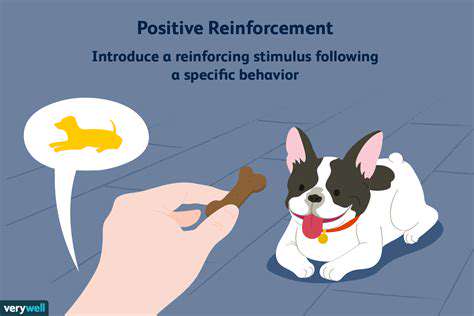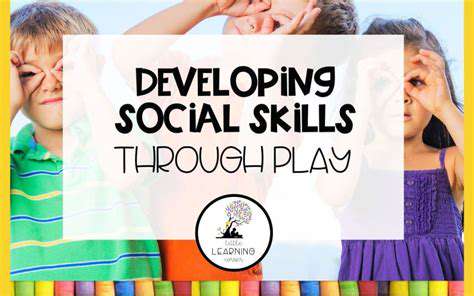The Importance of Consequences in Shaping Behavior

Understanding the Principles of Positive Reinforcement
Positive reinforcement is a cornerstone of effective training and behavior modification, focusing on rewarding desired actions to increase their likelihood of repetition. This approach emphasizes the importance of understanding and acknowledging positive behaviors, providing a clear signal to the individual or animal that the desired action is valuable. By consistently rewarding the positive, you create a strong association between the behavior and the positive consequence, ultimately strengthening the desired response.
Essentially, positive reinforcement works by adding a positive stimulus after a desired behavior. This stimulus, often a reward, serves to reinforce the behavior and encourage its repetition. This contrasts with punishment, which aims to suppress undesirable behaviors.
Types of Positive Reinforcers
Positive reinforcers come in many forms, catering to diverse needs and motivations. Tangible rewards, such as treats, toys, or stickers, are a classic example, particularly effective with animals and children. Social rewards, such as praise, attention, or a pat on the back, are also powerful motivators, fostering feelings of accomplishment and connection. Positive reinforcers can also include experiences, such as a favorite activity or a trip to a special place.
The effectiveness of a positive reinforcer depends heavily on its relevance to the individual. What motivates one person might not motivate another, so understanding individual preferences is crucial.
Implementing Positive Reinforcement Strategies
The key to successful positive reinforcement lies in its consistent and timely application. Consistency ensures the individual clearly understands the desired behavior and its associated reward. Timing is equally crucial, as the reward needs to follow the desired behavior immediately for maximum impact.
By understanding and applying these principles, you can create a positive and supportive learning environment that fosters desired behaviors. Careful observation of the individual's reactions and needs is essential for tailoring the reinforcement strategy effectively.
Specific Application in Educational Settings
In educational settings, positive reinforcement can be used to motivate students and encourage desired academic behaviors. Praise, extra credit, or small rewards for completing assignments can be highly effective in boosting engagement and motivation. Clear expectations and consistent application are paramount in creating a positive learning atmosphere.
This can also extend to fostering collaborative learning environments, where students are rewarded for teamwork and active participation, creating a supportive and motivating classroom.
Applying Positive Reinforcement in Animal Training
Positive reinforcement is a widely used and highly effective method for animal training. By rewarding desired behaviors with treats, praise, or toys, trainers can encourage the animal to repeat those actions. This approach promotes a positive and supportive learning experience for the animal.
By focusing on what the animal *does* rather than what it *doesn't*, a more enjoyable and effective training experience is created, resulting in stronger bonds and improved learning.
Long-Term Benefits and Sustainability
The use of positive reinforcement fosters not only immediate behavioral changes but also long-term positive effects. A positive learning environment builds confidence and a desire to learn and improve. This positive association leads to more sustainable and enduring behavioral changes.
By prioritizing positive reinforcement, you build a foundation for lasting growth and development in both individuals and animals, leading to stronger, more well-rounded outcomes.

Consequences and Learning: A Continuous Cycle
Understanding the Role of Consequences
Consequences, both positive and negative, play a crucial role in shaping behavior. They act as feedback mechanisms, signaling the effectiveness of actions and influencing future choices. Understanding this fundamental principle is essential for both personal development and effective parenting or teaching. When we consciously consider the potential consequences of our actions, we're better equipped to make informed decisions and avoid potentially harmful outcomes.
The nature of a consequence can be subtle, influencing our actions without us fully realizing it. A simple feeling of pride after completing a challenging task is a positive consequence. A feeling of embarrassment after acting impulsively is a negative consequence. By recognizing these subtle signals, we can learn to steer ourselves toward desired behaviors and away from unwanted ones. This continuous cycle of action, consequence, and learning is vital for personal growth.
Consequences as Learning Opportunities
Rather than simply punishments, consequences can be powerful learning tools. Experiencing the results of our choices, whether good or bad, provides invaluable insights into the world around us. Positive consequences reinforce desirable behaviors, motivating us to repeat those actions. Negative consequences, while unpleasant, serve as important warnings, helping us avoid repeating mistakes. The key is to frame these experiences as opportunities for growth, rather than simply reactions to wrongdoing.
Consider a child who experiments with fire and gets burned. This painful experience serves as a powerful and immediate consequence. Instead of focusing solely on the punishment, we can help the child understand why touching fire is dangerous and how their actions caused a specific negative outcome. This creates a lasting learning experience.
The Relationship Between Consequences and Responsibility
Consequences are intrinsically linked to the concept of responsibility. When individuals understand that their actions have predictable outcomes, they begin to internalize the importance of taking responsibility for those outcomes. This internalization is crucial for developing a sense of accountability and self-regulation. By accepting responsibility for the consequences of our choices, we empower ourselves to learn from them and improve our future behavior.
Individuals who consistently avoid taking responsibility for their actions often struggle to learn and grow. Facing consequences, even unpleasant ones, ultimately paves the path toward greater self-awareness and personal accountability.
Positive Reinforcement and Motivational Consequences
Positive consequences, often overlooked, play a vital role in reinforcing positive behaviors. A simple compliment, a well-deserved reward, or a feeling of accomplishment can all serve as positive consequences that motivate and encourage continued positive action. These motivational consequences are essential for fostering intrinsic motivation and a desire to learn and grow. Positive reinforcement doesn't necessarily have to be extravagant; even a simple verbal affirmation can have a powerful impact on behavior.
Acknowledging and rewarding good behavior creates a positive learning environment, encouraging individuals to strive for excellence and achievement. This approach fosters a sense of pride and self-worth, ultimately strengthening their personal responsibility.
Negative Consequences and their Purpose
Negative consequences, while often viewed negatively, are necessary for effective learning and behavior modification. They act as a deterrent against undesirable actions, helping individuals avoid harmful outcomes. It's crucial to differentiate between discipline and punishment. Discipline aims to teach, while punishment often focuses on retribution. Effective negative consequences help individuals understand the connection between their choices and the repercussions, preventing them from repeating the same mistakes.
The goal of negative consequences should always be to teach and redirect behavior, rather than simply inflicting pain or humiliation. A thoughtful approach will consider the individual's developmental stage and the specific context of the situation, ensuring the consequence aligns with the need for learning and change.
Long-Term Effects and Continuous Learning
The impact of consequences extends far beyond the immediate situation. Understanding the long-term effects of our choices allows us to make more informed and sustainable decisions. The continuous cycle of learning from consequences shapes our character and influences our future actions. By embracing this cycle, we become more resilient, responsible, and capable of navigating the complexities of life.
Developing a strong understanding of consequences also cultivates empathy and awareness of the impact our actions have on others. This heightened awareness fosters compassion and ultimately leads to more harmonious interactions within personal and professional relationships.


